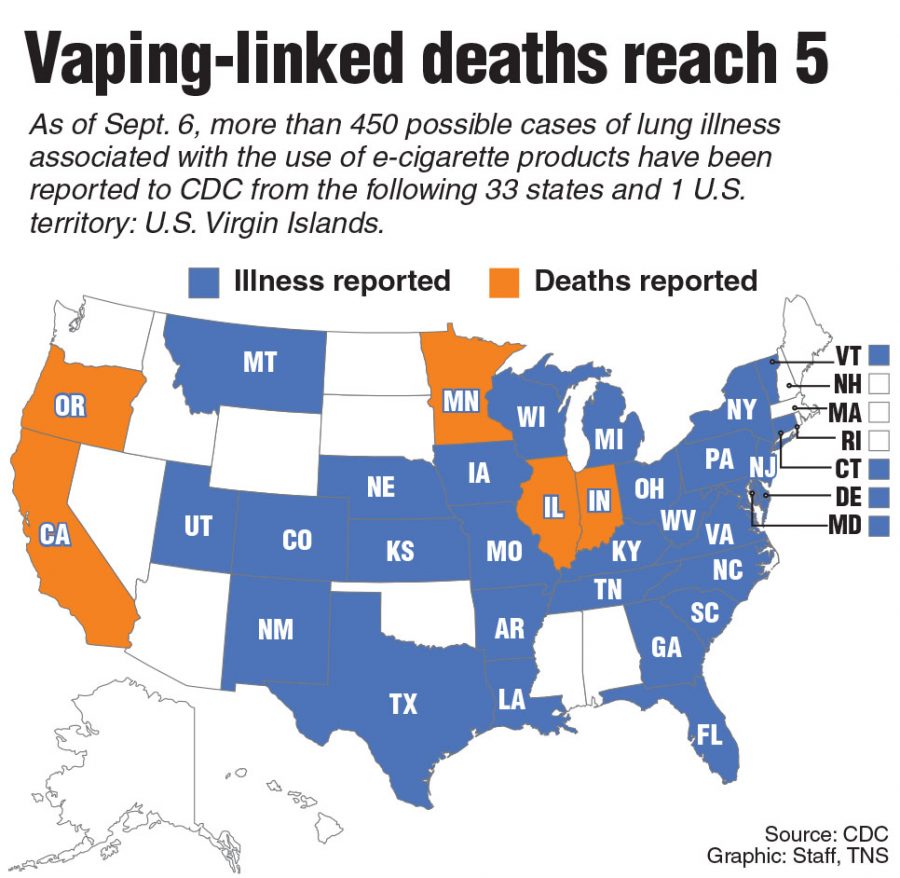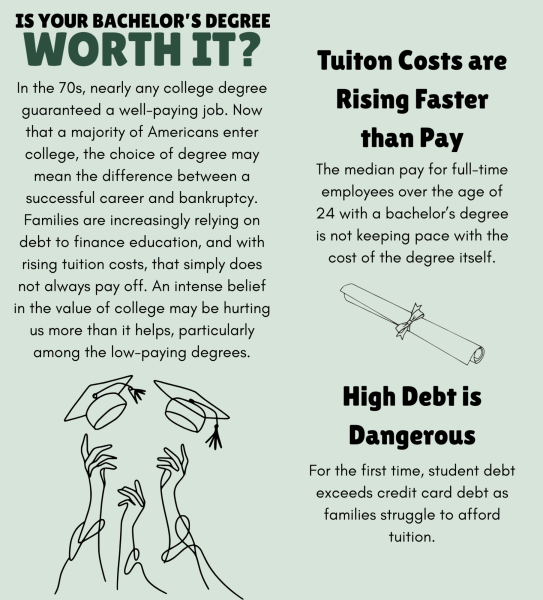Trump should not ban selling e-cigs
Map showing lung illness and deaths related to vaping.
Originally, electronic cigarettes, usually referred to as e-cigs or vapes, were created to relieve those addicted to cigarettes by transitioning them to something comparatively harmless. But around 2017, e-cigs have increasingly and rapidly become more widespread than ever before.
After the surge of the thousands of new vaping flavors, teens and young adults have since been hooked. Because e-cigs have become an epidemic, the Trump administration has recently decided to take a stand against the issue.
President Trump announced that he is seeking to ban the selling of e-cigarettes nationally. Although I do agree that vaping is a huge issue among teens and young adults, I do not think that banning vapes will be effective in reducing the national average of users.
As seen in the past, Americans do not take the idea of their possessions or their rights from being taken away lightly. A couple examples of this would be women fighting for voting rights and people fighting to end slavery.
Trump’s plan will inevitably lead to a black market which could potentially place users in greater danger than before.
Instead of simply banning e-cigs, I think better educating the users of the potential dangers of e-cigs could be more effective in reducing the average use. For example, it is well known that e-cigs contain way fewer chemicals than regular cigarettes.
But some vape users remain unaware to the dangers of a remaining chemical- nicotine. According to Johns Hopkins Medicine, not only is nicotine addictive, but it is also “a toxic substance. It raises your blood pressure and spikes your adrenaline which increases your heart rate and the likelihood of having a heart attack.”
Absorbing simple facts like this one would allow users to make more informed decisions for themselves in the future.
There have been hundreds of anti-smoking campaigns that taught on the dangers of cigarettes and encouraged users to quit. As annoying as the campaigns may have appeared, they were and still are, effective.
Cigarette smoking rates have fallen 67 percent among adults, from 42.6 percent in 1965 to 14.0 percent in 2017, according to the American Lung Association. Education has proven to be key in situations like these.
Now that the cigarette rate has and continues to decline through persistent education, we need to turn our attention to the rising e-cigarette use in the same way.
Over 80 percent of college students reported awareness of Juuls, 36 percent reported trying Juuls and one in five reported current Juul use, according to Taylor and Francis Online. Vaping is a huge issue among college students and will continue to be one if we do not try to make a change. Let’s set the example and start fighting these numbers through education.





